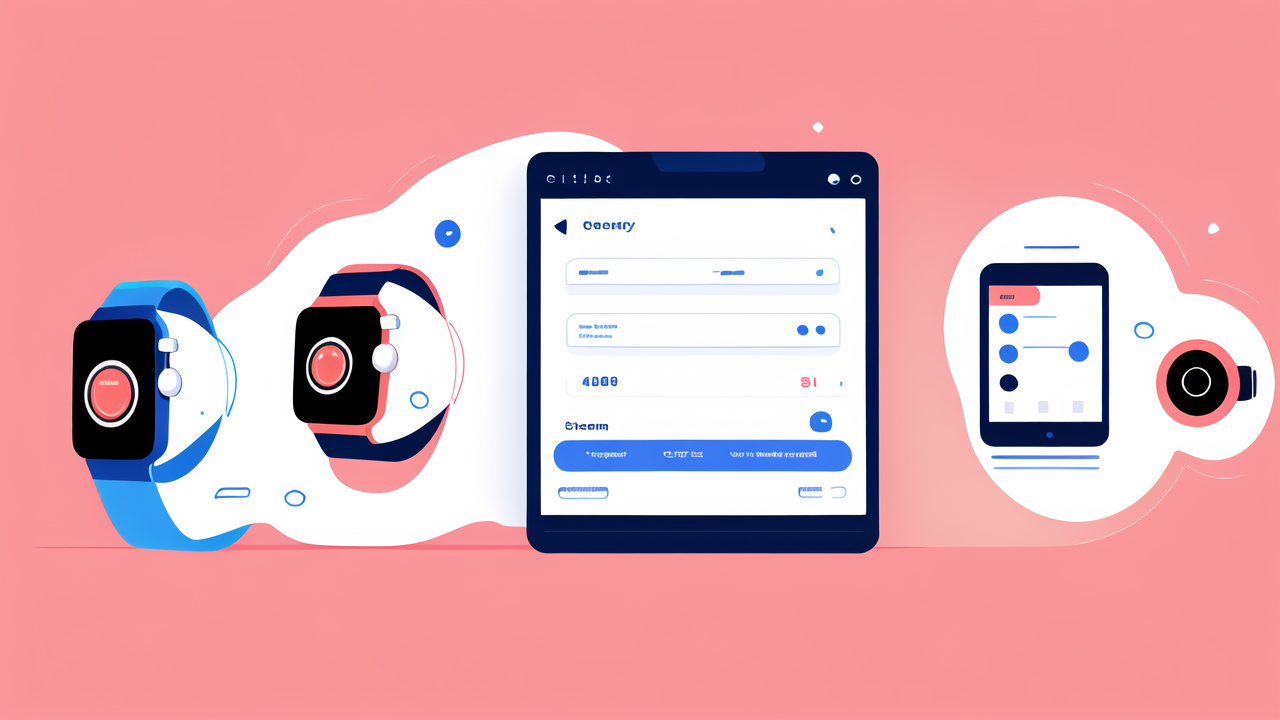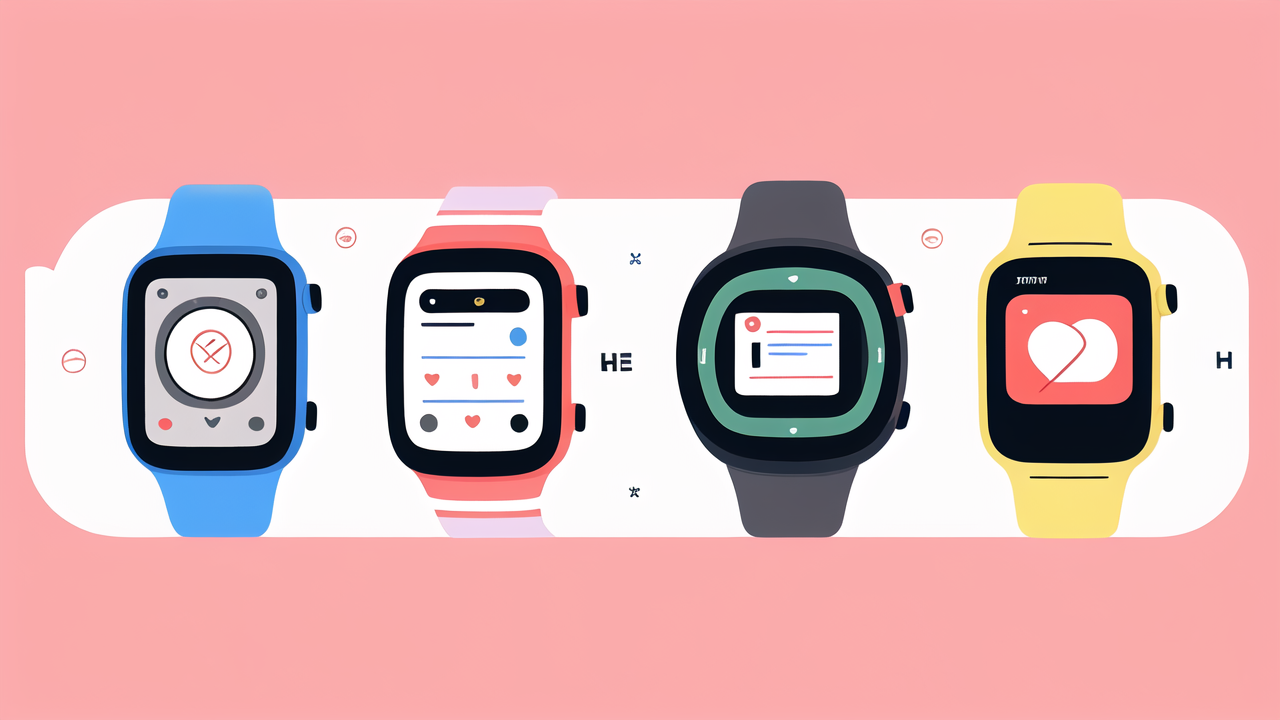Understanding the Evolution of Smart Watches in the U.S. Market
The history of watches and the rise of smart technology
Watches have come a long way since their inception. From simple timekeeping devices, they've evolved into smart gadgets. The journey began with mechanical watches, followed by quartz models. The digital era brought LCD displays and basic functions.

In the early 2000s, the concept of smartwatches emerged. They combined timekeeping with digital features. The first models were bulky and had limited functions. As technology advanced, so did smartwatches. They became sleeker, more powerful, and more useful.
The real breakthrough came with the rise of smartphones. Smartwatches began to sync with phones, offering new possibilities. They could now display notifications, track fitness, and even make calls. This marked the birth of the modern smartwatch era in the U.S. market.
Key features that define a smartwatch in the United States
In the U.S., a smartwatch is more than just a timepiece. It's a wearable computer on your wrist. Key features include:
- Connectivity: Bluetooth and Wi-Fi for syncing with smartphones
- Fitness tracking: Step counting, heart rate monitoring, and workout tracking
- Notifications: Alerts for calls, messages, and app updates
- Touchscreen display: For easy navigation and interaction
- Apps: Access to various applications for added functionality
- Voice control: Ability to use voice commands for hands-free operation
- Long battery life: Lasting at least a day on a single charge
- Water resistance: Protection against splashes or swimming
These features set smartwatches apart from traditional watches. They offer a blend of style and technology that appeals to many U.S. consumers.
The impact of market trends on smartwatch adoption
Market trends have significantly influenced smartwatch adoption in the U.S. The growing focus on health and fitness has been a major driver. Many people now use smartwatches to track their exercise and monitor their health.
The rise of contactless payments has also boosted adoption. Many smartwatches now support mobile payments. This adds convenience for users who can pay with a tap of their wrist.
Another trend is the integration of smartwatches with smart home systems. Users can control their homes directly from their wrists. This has made smartwatches more appealing to tech-savvy consumers.
The COVID-19 pandemic has also impacted adoption. With more people working from home, smartwatches have become valuable tools. They help manage notifications and track activity levels during remote work.
Analyzing Consumer Behavior Towards Smart Watches
The demographics of smartwatch users in the United States
Smartwatch users in the U.S. span various age groups and backgrounds. However, certain trends emerge:

- Age: Millennials and Gen Z are the most likely to own smartwatches
- Gender: Men are slightly more likely to own smartwatches than women
- Income: Higher-income individuals are more likely to own smartwatches
- Education: College graduates have higher adoption rates
- Location: Urban dwellers show higher smartwatch ownership rates
Interestingly, the age gap in smartwatch adoption is narrowing. Older adults are increasingly embracing this technology. They value features like health monitoring and emergency alerts.
Fitness enthusiasts form a significant portion of smartwatch users. They appreciate the workout tracking and health monitoring features. Tech-savvy professionals also make up a large user base. They value the productivity features and seamless integration with their devices.
Consumer preferences for smartwatches and fitness trackers
When it comes to smartwatches and fitness trackers, U.S. consumers have clear preferences:
- Design: Sleek, stylish designs that can be worn all day
- Battery life: Long-lasting batteries that don't need daily charging
- Accuracy: Precise tracking of fitness metrics and health data
- Ease of use: Intuitive interfaces and simple setup processes
- Compatibility: Seamless integration with smartphones and other devices
- Customization: Ability to personalize watch faces and bands
- Water resistance: Protection for swimming and water-based activities
- Price: Value for money, with features justifying the cost
Many consumers prefer devices that blend smartwatch and fitness tracker features. They want a single device that can do it all. This has led to the rise of hybrid smartwatches. These devices offer traditional watch looks with smart features.
How brand reputation and design influence buying decisions
Brand reputation plays a crucial role in smartwatch buying decisions. Established tech brands like Apple and Samsung have an edge. Their reputation for quality and innovation attracts many buyers.
Traditional watch brands entering the smartwatch market also benefit from their reputation. Brands like Fossil and Tag Heuer appeal to those who value classic watch design.
Design is another key factor. Many consumers view smartwatches as fashion accessories. They want devices that look good and match their style. This has led to a wide range of designs, from sporty to elegant.
Some key design elements that influence buying decisions include:
- Watch face shape (round vs. square)
- Display type (OLED, LCD, e-ink)
- Band material and style
- Color options
- Size and thickness
Brands that offer a variety of designs tend to appeal to a wider audience. They allow consumers to choose a device that fits their personal style.
Evaluating the Competitive Landscape of the Smart Watch Industry
Leading brands in the U.S. smartwatch market
The U.S. smartwatch market is dominated by a few key players:

- Apple: The Apple Watch leads the market with its seamless iOS integration
- Samsung: Known for its Galaxy Watch series with versatile features
- Fitbit: Popular for its fitness-focused smartwatches
- Garmin: Favored by serious athletes for its advanced sports tracking
- Fossil: Offers stylish smartwatches running on Google's Wear OS
These brands have carved out their niches in the market. Apple appeals to iPhone users and tech enthusiasts. Samsung targets Android users with feature-rich devices. Fitbit focuses on health and fitness tracking. Garmin caters to serious athletes and outdoor enthusiasts. Fossil attracts fashion-conscious consumers with its stylish designs.
Innovations and differentiators in smartwatch technology
Smartwatch makers are constantly innovating to stand out. Some key innovations include:
- Advanced health monitoring: ECG, blood oxygen level tracking, stress detection
- Improved battery life: Some watches now last weeks on a single charge
- LTE connectivity: Allows smartwatches to function independently of smartphones
- AI assistants: More advanced voice control and predictive features
- Gesture control: Ability to control the watch with hand movements
- Enhanced durability: Tougher materials for outdoor and extreme use
- Sleep tracking: Detailed analysis of sleep patterns and quality
These innovations help brands differentiate themselves. They also address common user pain points like battery life and functionality.
Future projections: What's next for the smartwatch industry?
The future of the smartwatch industry looks promising. Analysts predict continued growth and innovation. Some key trends to watch:
- Health focus: More advanced health monitoring features
- AI integration: Smarter, more predictive smartwatches
- Extended battery life: New technologies to improve power efficiency
- Flexible displays: Watches with bendable or rollable screens
- Enhanced connectivity: 5G integration for faster, more reliable connections
- Sustainability: Eco-friendly materials and longer-lasting devices
As technology advances, smartwatches may become even more central to our digital lives. They could evolve into comprehensive health monitors and digital assistants. The line between smartwatches and medical devices may blur. This could open up new markets and use cases.
The industry is also likely to see more competition. Traditional watch brands and tech companies will continue to enter the market. This competition will drive innovation and potentially lower prices. It's an exciting time for the smartwatch industry, with much potential for growth and development.




Leave a comment
This site is protected by hCaptcha and the hCaptcha Privacy Policy and Terms of Service apply.